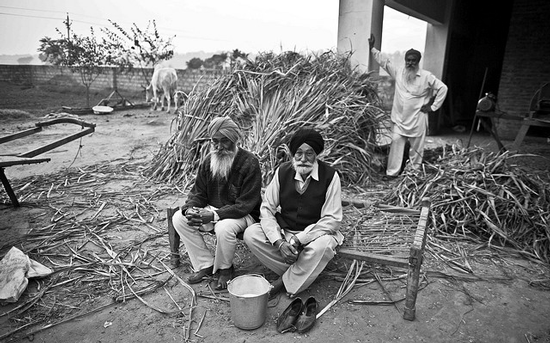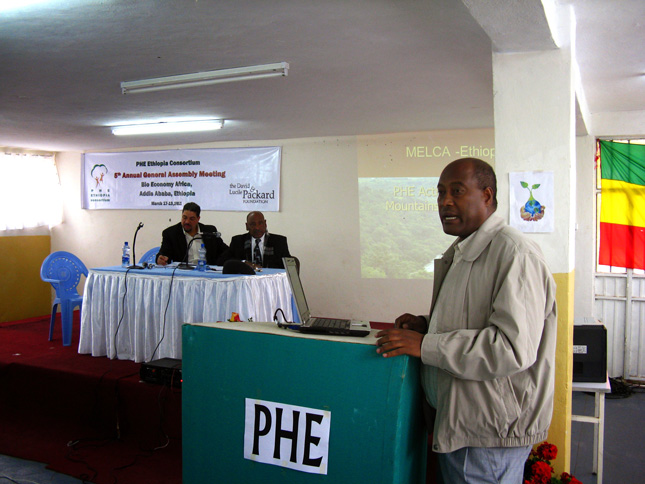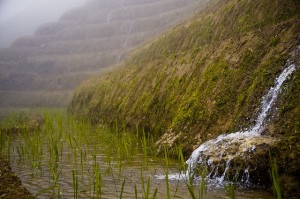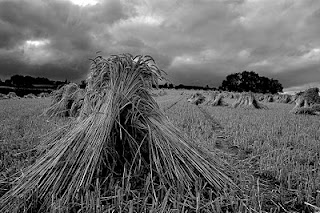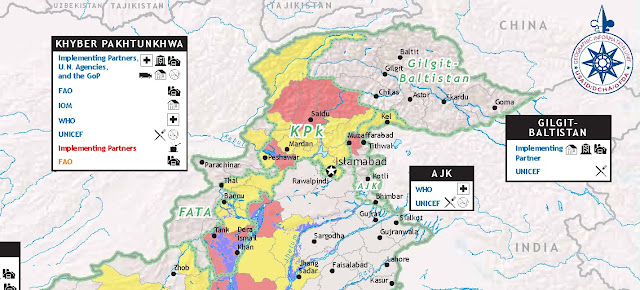-
Biofuels: Food, Fuel, and Future?
›The Wilson Center’s Program on America and the Global Economy (PAGE) together with the Brazil Institute, have held a series of conferences focused on the field of biofuels and its impact both internationally and domestically. As part of the series, PAGE has published the results of a conference held last July on the current “state-of-play” for the biofuels industry in the United States.
In the brief, Biofuels: Food, Fuel, and Future?, C. Ford Runge and Robbin S. Johnson, of the University of Minnesota, and Calestous Juma, of Harvard University, provide context on the various federal mandates, subsidies, and policies that affect the U.S. biofuels market. They also present recommendations to improve what is now a not-so-new market, with the aim of reducing damaging effects on food prices and creating more international competition. The brief was edited by PAGE Director Kent H. Hughes and Elizabeth A. Byers.
Read more from PAGE on their blog, America and the Global Economy, and download the full brief and other PAGE publications from their website at the Wilson Center. -
Michael Kugelman, World Politics Review
The Gathering Global Food Storm
›March 28, 2011 // By Wilson Center StaffThe original version of this article, by Michael Kugelman, appeared on World Politics Review.
In India’s vibrant capital, food seems to be everywhere – from bustling fruit and vegetable markets and greasy kebab stalls, to sumptuous platters in rooftop restaurants and dilli ki chaat, Delhi’s ubiquitous street snacks. Poor street vendors and high-end chefs alike offer a multitude of culinary options to keep the city – and its array of visiting tourists, diplomats and business leaders – well-fed.
Yet behind this apparent culinary prosperity lies rampant food insecurity. Food-related inflation in India soared above 18 percent in December, sparking street protests over high onion prices. Today, food-related inflation remains high, at nearly 12 percent. In a nation where at least 250 million subsist on less than a dollar a day, even modest price rises have a devastating impact on incomes and livelihoods. Yet, when food prices fall, India’s small farmers suffer. Already crippled by debt and encumbered by water shortages, 200,000 of them have committed suicide over the past 13 years.
India is not alone in this story. Just a few years removed from the 2007-2008 global food crisis, the world is once again experiencing the telltale drivers of acute food insecurity: rising prices of both food and oil, low agricultural yields, destructive weather and unquenchable demand. Once again, nations are banning exports in an effort to keep prices down at home – even as such policies drive up food costs in global markets. The consequences can be seen from Bolivia, where top government officials are hoarding food in their homes, to the Middle East, where the rising cost of basic foodstuffs has become a rallying cry for revolution.
Continue reading on World Politics Review.
Michael Kugelman is a program associate for the Asia Program at the Wilson Center and lead editor of Hunger Pains: Pakistan’s Food Insecurity and Land Grab? The Race for the World’s Farmland.
Sources: The Economist, India’s Contemporary Security Challenges, CNN, The Washington Post.
Photo Credit: Adapted from “India’s Food Crisis,” courtesy of flickr user lecercle. -
Integrated Approach Helps “Model Farmers” Increase Productivity in Ethiopia
›March 24, 2011 // By Schuyler Null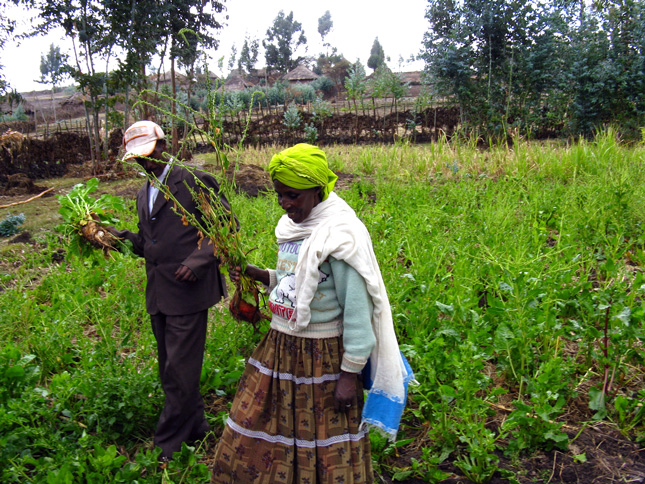
To reach the village of Grar Gaber from Addis Ababa, you drive up over the Entoto Mountains overlooking the capital then motor down two hours of new Japanese-built highway to the town of Fiche. From there it’s 20 minutes on a broken dirt road across rocky hills. I was joined there by about 20 others from the PHE Ethiopia Consortium’s general assembly (see day one and day two coverage here) and Population Action International, to visit an integrated population, health, and environment (PHE) development program run by LEM Ethiopia.
-
The Continuing Challenges of Integrated Development
›March 20, 2011 // By Schuyler Null
“How are we going to feed all these mouths?” asked Bekele Hambissa, director of the Environmental Protection and Development Organization in Addis, on day two of the PHE Ethiopia Consortium general assembly (read about day one here). Environmental resources are directly tied to Ethiopia’s population growth, said Hambissa, during a discussion of balancing efforts to address population growth, environment, and livelihoods. While poverty alleviation is an important goal of population, health, and environment integration (PHE), it must be environmentally sustainable, he said.
-
How Population Growth Is Straining the World’s Most Vital Resource
Turning Up the Water Pressure [Part Two]
›January 19, 2011 // By Russell SticklorThis article by Russell Sticklor appeared originally in the Fall 2010 issue of the Izaak Walton League’s Outdoor America magazine. Read part one here.
As concerns over water resources have grown around the globe, so too have proposed solutions, which range from common sense to absurd. Towing icebergs into the Persian Gulf or floating giant bags of fresh water across oceans to water-scarce countries are among the non-starters. But more moderate versions of those ideas are already being put into practice. These solutions showcase the power of human ingenuity — and reveal just how desperate some nations have become to secure water.
For example, India is doing business with a company out of tiny Sitka, Alaska, laying the framework for a water-export deal that could see huge volumes of water shipped via supertankers from the water-rich state of Alaska to a depot south of Mumbai. Depending on the success of this arrangement, moving bulk water via ship could theoretically become as commonplace as transoceanic oil shipments are today.
There is far greater potential, however, in harnessing the water supply of the world’s oceans. Perhaps more than any other technological breakthrough, desalination offers the best chance to ease our population-driven water crunch, because it can bolster supply. Although current desalination technology is not perfect, Eric Hoke, an associate professor of environmental engineering at the University of California-Los Angeles, told me via email, it is already capable of converting practically any water source into water that is acceptable for use in households, agriculture, or industrial production. Distances between supply and demand would be relatively short, considering that 40 percent of the world’s population — some 2.7 billion people — live within 60 miles of a coastline.
The Lure of Desalination
Although desalination plants are already up and running from Florida to Australia, the jury is still out on the role desalination can play in mitigating the world’s fresh water crisis. Concerns persist over the environmental impact seawater-intake pipes have on marine life and delicate coastal ecosystems. Another question is cost: Desalination plants consume enormous amounts of electricity, which makes them prohibitively expensive in most parts of the world. Desalination technology may not be able to produce water in sufficient scale — or cheaply enough — to accommodate the growing need for agricultural water. “Desalination is more and more effective [in producing] large quantities of water,” notes Laval University Professor Frédéric Lasserre in an interview. “But the capital needed is huge, and the water cost, now about 75 cents per cubic meter, is far too expensive for agriculture.” Although desalination might be “a good solution for cities and industries that can afford such water,” Lasserre predicts it “will never be a solution for agricultural uses.”
Nevertheless, desalination’s promise of easing future water crunches in populous coastal regions gives the technology game-changing potential at the global level. “Desalination technology,” Columbia University’s Upmanu Lall told said in an email, “will improve to the point that [water scarcity] will not be an issue for coastal areas.”
A Glass Half Full
With world population projected to grow by at least 2 billion during the next 40 years, water will likely remain a chief source of global anxiety deep into the 21st century. Because water plays such a fundamental role in everyday life across every society on earth, its shared stewardship may become an absolute necessity.
Take India and Pakistan’s landmark Indus Waters Treaty of 1960, which is still in effect today. The agreement — signed by two countries that otherwise can’t stand each other — shows that when crafted appropriately and with enough patience, international water-sharing pacts can help defuse tensions over water access before those tensions escalate into violence. Similar collaboration on managing shared waters in other areas of the world — a process that can be a bit bumpy at times — has proven successful to date.
Meanwhile, more widespread distribution of reliable family planning tools and services across Latin America, sub-Saharan Africa, and Asia will also be needed if the international community hopes to meaningfully address water scarcity concerns. Better access to healthcare and family planning tools would empower women to take greater control over their reproductive health and potentially elevate living standards in crowded parts of the developing world. Smaller family sizes would help decelerate population growth over time, easing the burden on water and soil resources in many areas. The key is ensuring such efforts have adequate funding. The United States recently pledged $63 billion over the next six years through its Global Health Initiative to help partner countries improve health outcomes through strengthened health systems, with a particular focus on improving the health of women and children.
Putting a dent in the global population growth rate will be important, but it must be accompanied by a sustained push for conservation — nowhere more so than in agriculture. Investing in the repair of a leaky irrigation infrastructure could help save water that might otherwise literally slip through the cracks. Attention to maintaining healthy soil quality — by practicing regular crop rotation, for example — could also help boost the efficiency of irrigation water.
Setting a Fair Price
The most enduring changes to current water-use practices may have to come in the form of pricing. In most parts of the world, including parts of the United States, groundwater removal is conducted with virtually zero oversight, allowing farmers to withdraw water as if sitting atop a bottomless resource. But as groundwater tables approach exhaustion, the equation changes; as Ben Franklin famously pointed out, “when the well’s dry, we know the worth of water.”
The key, then, is to establish the worth of water before this comes to pass. Smart pricing could encourage conservation by making it less economical to grow water-intensive crops, particularly those ill-suited to a particular climate. “Some crops being grown should not be grown . . . once the true cost of water is factored in,” Nirvikar Singh, a University of California-Santa Cruz economics professor who focuses on water issues, told me via email. Pricing would also provide a revenue stream for modernizing irrigation infrastructures and maintaining sewage systems and water treatment centers, further bolstering water efficiency and quality both in the United States and around the globe.
To be sure, implementing a pricing scheme for water resources — which have been essentially free throughout history — will be unpopular in many parts of the world. It’s natural to expect some pushback from the public as water managers and governments take steps to address the 21st century water crunch. But given the resource’s undeniable and universal value on an ever-more crowded planet, few options exist aside from using the power of the purse to push for more efficient water use.
In the end, however, water pricing must be combined with greater public value on water conservation — we must not flush water down our drains before using it to its full potential. Whether that involves improving the water transportation infrastructure, recycling wastewater, taking shorter showers, or turning to less water-intensive plants and crops, steps big and small need to be taken to better conserve and more equitably divide the world’s water to irrigate our farms, grow our economies, and sustain future generations.
Sources: Columbia Water Center, National Geographic, Population Reference Bureau, White House.
Photo Credits: “Juhu Beach Crowded,” courtesy of flickr user la_imagen, and “Irrigation (China),” courtesy of flickr user spavaai. -
How Population Growth Is Straining the World’s Most Vital Resource
Turning Up the Water Pressure [Part One]
›January 18, 2011 // By Russell SticklorThis article by Russell Sticklor appeared originally in the Fall 2010 issue of the Izaak Walton League’s Outdoor America magazine.
For many Americans, India — home to more than 1.1 billion people — seems like a world away. Its staggering population growth in recent years might earn an occasional newspaper headline, but otherwise, the massive demographic shift taking place on our planet is out of sight, out of mind. Yet within 20 years, India is expected to eclipse China as the world’s most populous nation; by mid-century, it may be home to 1.6 billion people.
So what?
In a world that is increasingly connected by the forces of cultural, economic, and environmental globalization, the future of the United States is intertwined with that of India. Much of this shared fate stems from global resource scarcity. New population-driven demands for food and energy production will increase pressure on the world’s power-generating and agricultural capabilities. But for a crowded India, domestic scarcity of one key resource could destabilize the country in the decades to come: clean, fresh water.
Stepping Into a Water-Stressed Future
From Africa’s Nile Basin and the deserts of the Middle East to the arid reaches of northern China, water resources are being burdened as never before in human history. There may be more or less the same amount of water held in the earth’s atmosphere, oceans, surface waters, soils, and ice caps as there was 50 — or even 50 million — years ago, but demand on that finite supply is soaring.
Consider that since 1900, the world population has skyrocketed from one billion to the cusp of seven billion today, with mid-range projections placing the global total at roughly 9.5 billion by mid-century. And it only took 12 years to add the last billion.
Unlike the United States — which is a water-abundant country by global standards — India is growing weaker with each passing year in its ability to withstand drought or other water-related climate shocks. India’s water outlook is cause for alarm not just because of population growth but also because of climate change-induced shifts in the region’s water supply. Depletion of groundwater stocks in the country’s key agricultural breadbaskets has raised water worries even further. Water scarcity is not some abstract threat in India. As Ashok Jaitly, director of the water resources division at New Delhi’s Energy and Resources Institute, told me this past spring, “we are already in a crisis.”
How the country manages its water scarcity challenges over the coming decades will have repercussions on food prices, energy supplies, and security the world over — impacts that will be felt here in the United States. And India is not the only country wrestling with the intertwined challenges of population growth and water scarcity.
Transboundary Tensions
Several of the world’s most strategically important aquifers and river systems cross one or more major international boundaries. Disputes over dwindling surface- and groundwater supplies have remained local and have rarely boiled over into physical conflict thus far. But given the challenges faced by countries like India, small-scale water disputes may move beyond national borders before the end of this century.
Looming global water shortages, warns a recent World Economic Forum report, will “tear into various parts of the global economic system” and “start to emerge as a headline geopolitical issue” in the coming decades.
This has become a national security issue for the United States. Any country that cannot meet population-linked water demands runs the risk of becoming a failed state and potentially providing fertile ground for international terrorist networks. For that reason, the United States is keeping close track of how water relations evolve in countries like Yemen, Syria, Somalia, Pakistan, and Afghanistan. It is also one of the reasons water security is a key goal of U.S. development initiatives overseas. For instance, between 2007 and 2008, the U.S. Agency for International Development (USAID) invested nearly $500 million across more than 70 countries to boost water efficiency, improve water treatment, and promote more sustainable water management.
More Mouths to Feed, Limited Land to Farm
Water is a critical component of industrial processes the world over — from manufacturing and mining to generating energy — and shapes the everyday lives of the people who rely on it for drinking, cooking, and cleaning. But the aspect of modern society most affected by decreasing water availability is food production. According to the United Nations, agriculture accounts for roughly 70 percent of total worldwide water usage.
Global population growth translates into tens of millions of new mouths to feed with each passing year, straining the world’s ability to meet basic food needs. Given the finite amount of land on which crops can be productively and reliably grown and the constant pressure on farms to meet the needs of a growing population, the 20th and early 21st centuries have been marked by periodic regional food crises that were often induced by drought, poor stewardship of soil resources, or a combination of the two. As demographic change continues to rapidly unfold throughout much of Asia and sub-Saharan Africa, the ability of farmers and agribusinesses to keep pace with surging food demands will be continually challenged. Food shortages could very well emerge as a staple of 21st century life, particularly in the developing world.
Mirroring the growing burden on farmland will be a growing demand for water resources for agricultural use — and the outlook is not promising. According to a report from the International Water Management Institute in Sri Lanka, “Current estimates indicate that we will not have enough water to feed ourselves in 25 years’ time.”
As one of the world’s largest agricultural producers, the United States will be affected by this food crisis in multiple ways. Decreased food security abroad will increase demand for food products originating from American breadbaskets in California and the Midwest, possibly resulting in more intensive (and less sustainable) use of U.S. farmland. It may also drive up prices at the grocery store. Booming populations in east and south Asia could affect patterns of global food production, particularly if severe droughts spark downturns in food production in key Chinese or Indian agricultural centers. Such an outcome would push those countries to import huge quantities of grain and other food staples to avert widespread hunger — a move that would drive up food prices on the global market, possibly with little advance warning. Running out of arable land in the developing world could produce a similar outcome, Upmanu Lall, director of the Columbia Water Center at Columbia University, said via email.
Changing Tastes of the Developing World
Economic modernization and population growth in the developing world could affect global food production in other ways. In many developing countries, rising living standards are prompting changes in dietary preferences: More people are moving from traditional rice- and wheat-based diets to diets heavier in meat. Accommodating this shift at the global level results in greater demand on “virtual water” — the amount of water required to bring an agricultural or livestock product to market. According to the World Water Council, 264 gallons of water are needed to produce 2.2 pounds of wheat (370 gallons for 2.2 pounds rice), while producing an equivalent amount of beef requires a whopping 3,434 gallons of water.
In that way, the growing appeal of Western-style, meat-intensive diets for the developing world’s emerging middle classes may further strain global water resources. Frédéric Lasserre, a professor at Quebec’s Laval University who specializes in water issues, said in an interview about his book Eaux et Territories, that at the end of the day, it simply takes far more water to produce the food an average Westerner eats than it does to produce the traditional food staples of much of Africa or Asia.
Continue reading part two of “Turning Up the Water Pressure” here.
Sources: Columbia Water Center, ExploringGeopolitics.org, International Water Management Institute (Sri Lanka), Population Reference Bureau, The Energy and Resources Institute (India), United Nations, USAID, World Economic Forum, World Water Council.
Photo Credits: “Ganges By Nightfall,” courtesy of flickr user brianholsclaw, and “Traditional Harvest,” courtesy of flickr user psychogeographer. -
International Responses to Pakistan’s Water Crisis
›December 6, 2010 // By Michael KugelmanExcerpt from the executive summary of the NOREF Policy Brief, via the Norwegian Peacebuilding Centre:
Pakistan faces a multidimensional water crisis that claims hundreds of thousands of lives every year. The root causes of the crisis are twofold:- Circumstantial, which are linked to poor water-resource management policies (including water-wasting flood irrigation);
- Structural, tied to factors deeply ingrained in politics and society such as the obsession with India, inequitable rural land-ownership and endemic water misgovernance (for example, exploitation of the rotational irrigation system to the detriment of the poor).
However, international responses must be measured. They should actively target the circumstantial causes but, at the same time, recognize that their ability to take on the structural ones is limited. While the international community can help mitigate the effects of the underlying structural drivers, Pakistan itself must take the ultimate steps to eliminate them.
Circumstantial causes can be addressed through international aid provision and international exchanges. Aid provision must be generous enough to meet Pakistan’s prodigious needs but modest enough to respect the country’s limited absorptive capacities. It should emphasize the restoration of infrastructure and distribution systems, be more responsive to the needs of Sindh and Baluchistan provinces, and be channeled through both government agencies and civil society.
Despite the challenges the international community faces in addressing the structural causes, opportunities do abound. These include embarking on back-channel diplomacy to bring Pakistan and India closer together and cooperative projects with Pakistanis to make water distribution more equitable. To be effective, international responses must target all affected parties and be sensitive to ground realities. They should also be mindful of indigenous success stories and the factors that bring about that success.
The full report, “International Responses to Pakistan’s Water Crisis: Opportunities and Challenges,” is available through the Norwegian Peacebuilding Centre.
Michael Kugelman is program associate with the Asia Program at the Woodrow Wilson International Center for Scholars.
Image Credit: Adapted from “USG Humanitarian Assistance to Pakistan for Floods in FY 2010 and FY 2011 (as of 30 Nov 2010),” courtesy of USAID and ReliefWeb. -
Food and Environmental Insecurity a Factor in North Korean Shelling?
›November 24, 2010 // By Schuyler NullJust two days before dozens of North Korean artillery shells fell on the island of Yeonpyeong off the west coast of Korea, a UN study reported that the DPRK was facing acute food shortages heading into the winter.
In a New York Times report, Choi Jin-wook, of the Korea Institute for National Unification in Seoul, called food “the number one issue.” While Choi just last month praised the resumption of food aid from the South to the North as a “starting point of a new chapter in inter-Korean relations,” she told the Times Wednesday that the North is “in a desperate situation, and they want food immediately, not next year.”
North Korea’s motives are notoriously indecipherable and this latest incident is no exception, but the regime has in the past sought to distract from domestic problems by inciting the international community (the sinking of the Cheonan being the other latest prominent example).
Infrastructure has always been primitive in the North under the DPRK regime, but the country’s tenuous food security situation was made worse this last year by an unusually long and severe winter followed by heavy flooding in the summer. Flooding was so bad during August and September, that the normally silent regime publically announced details of rescue operations around the northern city of Sinuiju. The joint FAO/WFP report put out by the UN does not predicate production will significantly recover in the next year and estimates an uncovered food deficit of 542,000 tons for 2010/11.
“A small shock in the future could trigger a severe negative impact and will be difficult to contain if these chronic deficits are not effectively managed,” Joyce Luma of the World Food Program told The New York Times.
For more on the severe weather events of this summer, including the flooding that impacted the DPRK and pushed the Three Gorge Dam to its stress limits in China, the impact of scarcity and climate change on the potential for conflict, and the intersection of food security and conflict elsewhere, see our previous coverage on The New Security Beat.
Sources: Christian Science Monitor, Food and Agriculture Organization, Los Angeles Times, The New York Times, UN, Washington Post, World Food Program.
Image Credit: Google Maps.
Showing posts from category agriculture.


